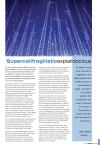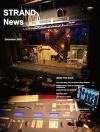Additional music and lyrics by George Stiles and Anthony Drewe
Original Production Dates:
Preview: Bristol Hippodrome: Previews from September 15 2004, Official opening September 18 2004, end of engagement November 6 2004.
West End Production at the Prince Edward Theatre: December 2004 – January 12 2008
Broadway Production at the New Amsterdam Theatre: November 16 2006 – March 3 2013 (2619 performances)
UK Tour began at the Theatre Royal Plymouth in 2009
Revival West End Production returned to the Prince Edward Theatre from 23 October 2019, paused in March 2020 due to the pandemic, and resumed 7th August 2021, before closing 8 January 2023.
This is based on the touring production, so has a slightly simplified (but still hugely impressive) set compared to the original West End production.
Official website: http://www.marypoppinsthemusical.co.uk/
Disney Theatrical: http://www.DisneyTheatricalProductions.com/
West End Premiere Production
Director: Richard Eyre
Book: Julian Fellowes
Production Design: Bob Crowley
Co-director & Choreography: Matthew Bourne and Stephen Mear
Lighting Design: Howard Harrison
Sound Design: Andrew Bruce
Illusion Design: Jim Steinmeyer
Produced by Cameron Mackintosh and Disney Theatrical
Beautiful cyclorama lighting was achieved using EvenLED – Rob Halliday (the lighting programmer on the show) has written an article about it, as well as the Classic Gear article below.
Related Equipment:
Documents
Journal Entries
Tour Automation by Delstar Engineering
After a spectacular run of Mary Poppins in London’s West End the musical began its first tour of the UK in Plymouth in June 2009. The magical theatre version includes all the hit songs from the classic Walt Disney film, including ‘Chim Chim Cher-ee’, ‘A Spoonful of Sugar’ and ‘Supercalifragilisticexpialidocious’!
Delstar Engineering Ltd was responsible for the design and manufacture of the house in which the play is set. This was done by breaking the set into three main areas.
1. A steel construction skeletal framework of the main house, with a drive system and central rotary bearing in the lower section of the housing to allow the whole framework to rotate, as well as two large doors covering the front of the house, which open up using individually driven motor gearboxes mounted in the roof.
2. A banister ‘saddle’ system allows an actress to move up the steel framed banister track, by sitting on an adjustable custom-made skate pulled upwards from a local winch and driven using a braked motor gearbox hidden within the staircase framework.
3. The nursery truss is a flown truss manufactured from steel box section with lattice bracing. It is lifted using winches. The ultimate travel positions are controlled using limit boxes and an earth trip system controls slack rope detection.
















